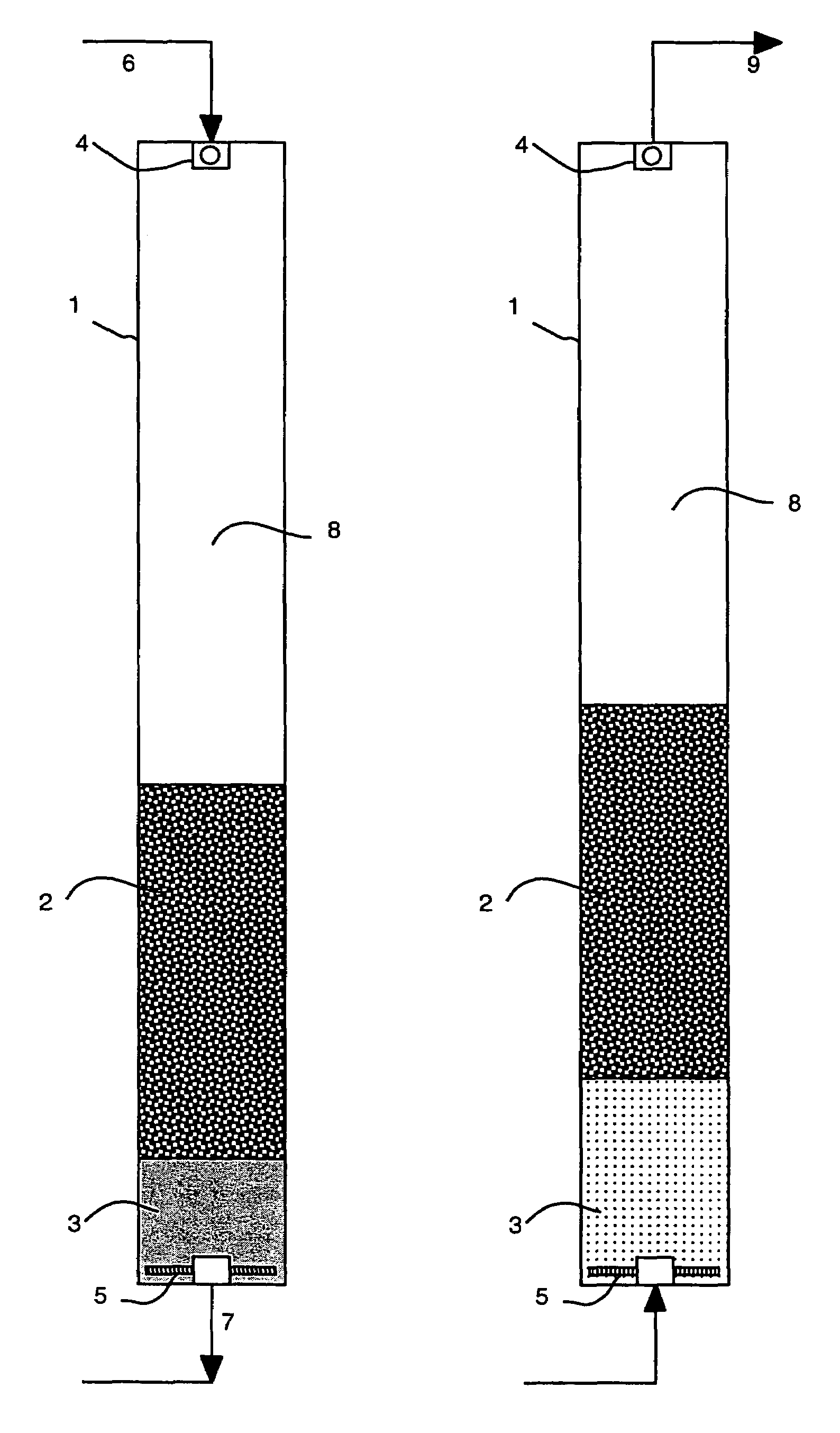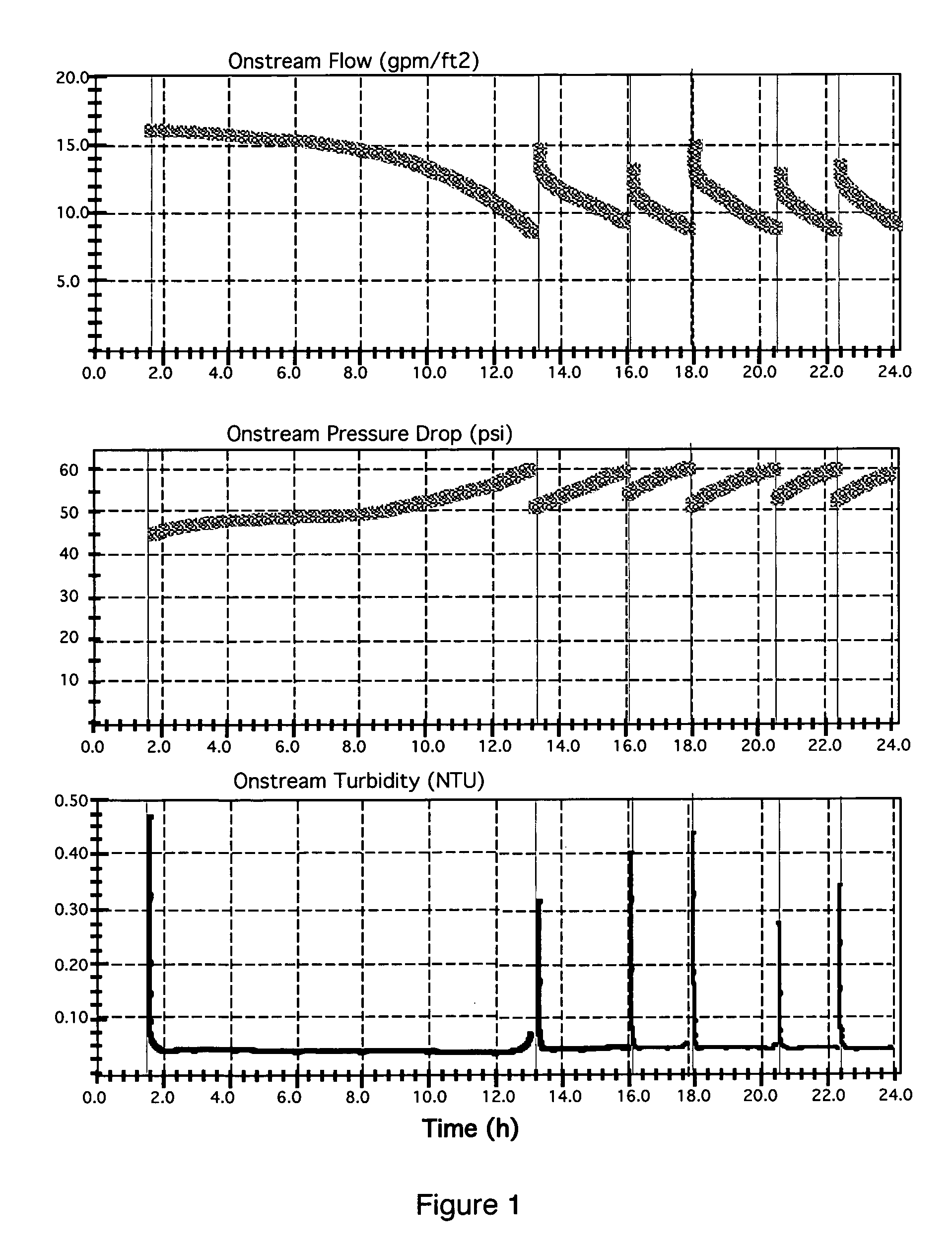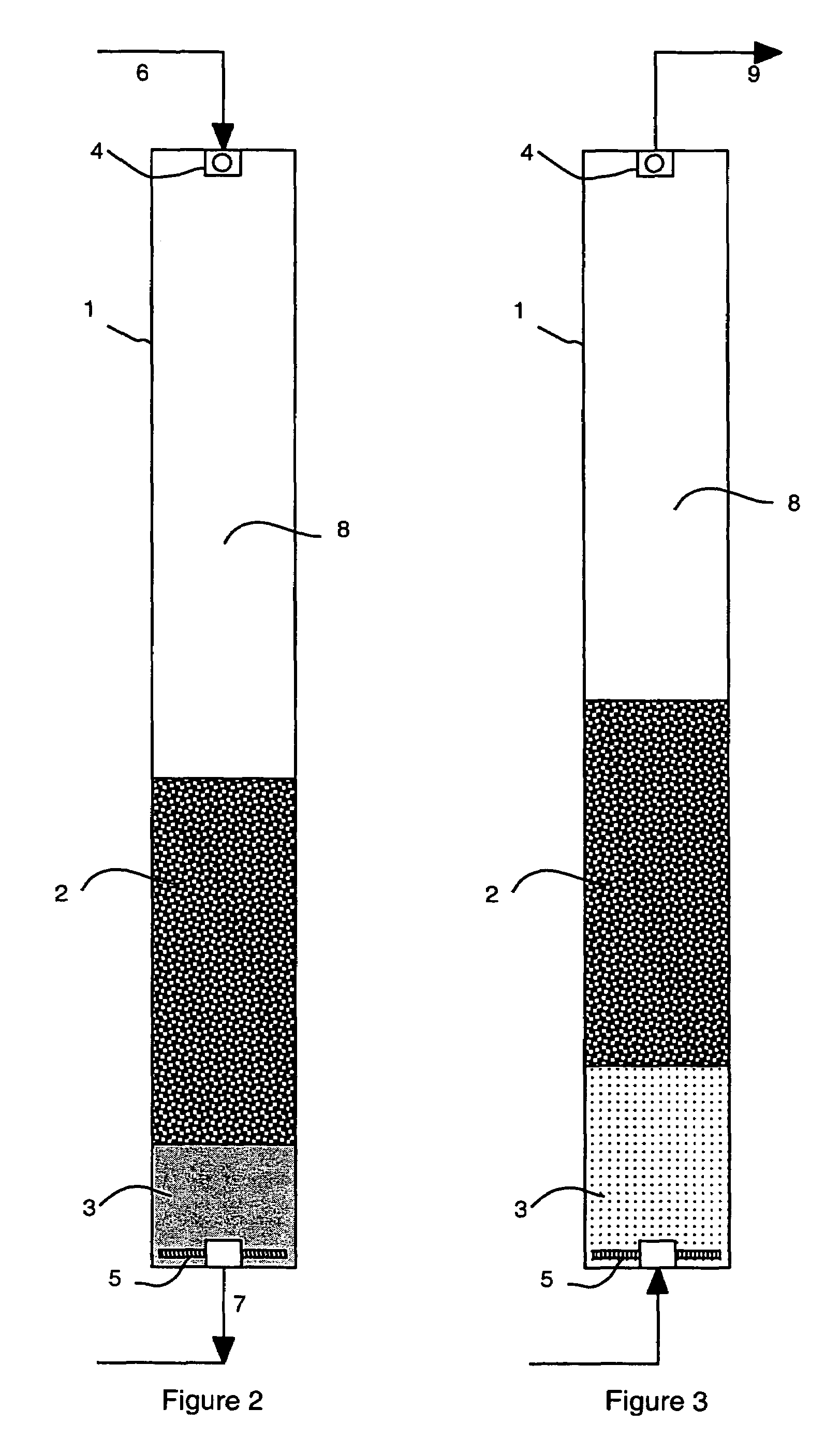Method and apparatus for increasing filter contaminant loading capacity
a filter and contaminant technology, applied in gravity filters, loose filtering materials, stationary filtering elements, etc., can solve the problems of increased resistance of the bed, increased pressure drop, and increased flow, so as to reduce the amount of time the filter is out of service, reduce the ripening time and volume of filtrate, and increase the solids loading capacity of the filter
- Summary
- Abstract
- Description
- Claims
- Application Information
AI Technical Summary
Benefits of technology
Problems solved by technology
Method used
Image
Examples
example
[0038]A dual media filter of a preferred embodiment of the invention was assembled for testing with the following specifications:[0039]Vessel diameter: 16 inches (40.6 cm)[0040]Vessel height: 96 inches (244 cm)[0041]Top media material: anthracite[0042]Top media density: 1.5 g / cm3 [0043]Top media effective size: 0.69 mm[0044]Top media unexpanded / free settled height: 36 inches (91 cm)[0045]Bottom media material: zircon sand[0046]Bottom media density: 4.6 g / cm3 [0047]Bottom media effective size: 0.09 mm (the ratio of fine to coarse particle size=0.13)[0048]Bottom media unexpanded / free settled height (above bottom strainers): 8 inches (20 cm)
[0049]The filter is shown in FIG. 2 and includes a pressure vessel (i.e. the filter vessel) 1 containing two layers of filter media, consisting of an upper, coarse media layer 2 and a lower, fine media layer 3. Liquid to be treated 6 is admitted to the top of the filter vessel 1. A fluid distributor 4 is used to dissipate the inlet liquid velocity a...
PUM
| Property | Measurement | Unit |
|---|---|---|
| depth | aaaaa | aaaaa |
| velocities | aaaaa | aaaaa |
| velocities | aaaaa | aaaaa |
Abstract
Description
Claims
Application Information
 Login to View More
Login to View More - R&D
- Intellectual Property
- Life Sciences
- Materials
- Tech Scout
- Unparalleled Data Quality
- Higher Quality Content
- 60% Fewer Hallucinations
Browse by: Latest US Patents, China's latest patents, Technical Efficacy Thesaurus, Application Domain, Technology Topic, Popular Technical Reports.
© 2025 PatSnap. All rights reserved.Legal|Privacy policy|Modern Slavery Act Transparency Statement|Sitemap|About US| Contact US: help@patsnap.com



